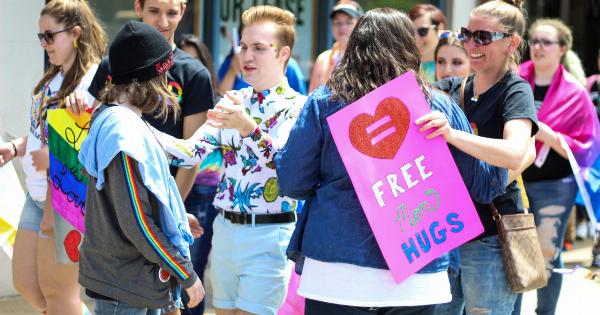Sexual harassment is a pervasive issue that affects individuals of all ages. However, young people are often particularly vulnerable to various forms of sexual harassment.
This article aims to shed light on the most common forms of sexual harassment experienced by young people, highlighting the importance of addressing and preventing such misconduct.
1. Verbal Harassment
Verbal sexual harassment involves unwelcome comments, jokes, innuendos, or compliments of a sexual nature. Young people often face this form of harassment, which can occur in various settings such as schools, workplaces, or public spaces.
Inappropriate remarks about appearance, sexual behavior, or explicit discussions are some examples of verbal sexual harassment.
2. Non-verbal Harassment
Non-verbal sexual harassment encompasses actions, gestures, or behaviors of a sexual nature that make young people feel uncomfortable or threatened. Examples include leering, staring, making obscene gestures, or displaying explicit materials.
Non-verbal harassment can create a hostile environment and have lasting psychological effects on young victims.
3. Cyber Harassment
Cyber sexual harassment, also known as online harassment, has become increasingly prevalent with the rise of technology and social media.
Young people are often subjected to cyberbullying, revenge porn, sextortion, or unsolicited explicit messages online. This form of harassment can invade a person’s privacy, cause emotional distress, and even impact their reputation.
4. Sexual Advances
Another common form of sexual harassment faced by young people is unwelcome sexual advances. This could involve unwanted touching, groping, or attempts to engage in sexual activity without consent.
Such advances can occur in various contexts, including relationships, educational institutions, workplaces, or social gatherings, leaving young individuals feeling violated and powerless.
5. Sexual Coercion
Sexual coercion involves pressuring or manipulating young people into participating in sexual activities against their will. This can include threats, blackmail, emotional manipulation, or using a position of power to obtain consent.
Victims of sexual coercion often experience feelings of confusion, guilt, and fear, making it crucial to create awareness and support systems to address this issue.
6. Groping and Fondling
Groping and fondling refer to unwanted touching of a sexual nature. This could involve grabbing or fondling someone’s body parts without their consent.
Young people, especially in crowded areas or social gatherings, are vulnerable to experiencing this form of harassment. Victims may feel violated, humiliated, or unsafe as a result.
7. Sexual Harassment in Education
Schools and educational institutions can be breeding grounds for sexual harassment. Students may face sexual comments, inappropriate touching, or online harassment from peers, teachers, or other school staff.
Such misconduct can not only disrupt a student’s education but also cause long-term emotional distress and hinder their overall well-being.
8. Workplace Harassment
Young people entering the workforce may encounter various forms of sexual harassment. This can include unwelcome sexual advances, comments, or explicit materials shared at work.
Harassment in the workplace can create a toxic environment for young employees, affecting their job performance, mental health, and career prospects.
9. Victim Blaming and Shaming
Victim blaming and shaming is an unfortunate occurrence following instances of sexual harassment. Young people may face criticism, skepticism, or disbelief when they come forward about their experiences.
This culture of blaming the victim can deter individuals from reporting sexual harassment, perpetuating a cycle of silence and allowing offenders to go unpunished.
10. Intersectional Harassment
Intersectional harassment refers to the unique experiences faced by young people who may be subjected to both sexual harassment and various other forms of discrimination simultaneously, such as racism, homophobia, or ableism.
Intersectionality further compounds the impact of sexual harassment, making it crucial to consider the diverse experiences and identities of young victims.
In Conclusion
Addressing and preventing sexual harassment is of utmost importance, especially when it comes to protecting young people.
By understanding the various forms of sexual harassment they commonly experience, we can work towards creating safer environments for young individuals to grow, thrive, and express themselves freely without fear.





























